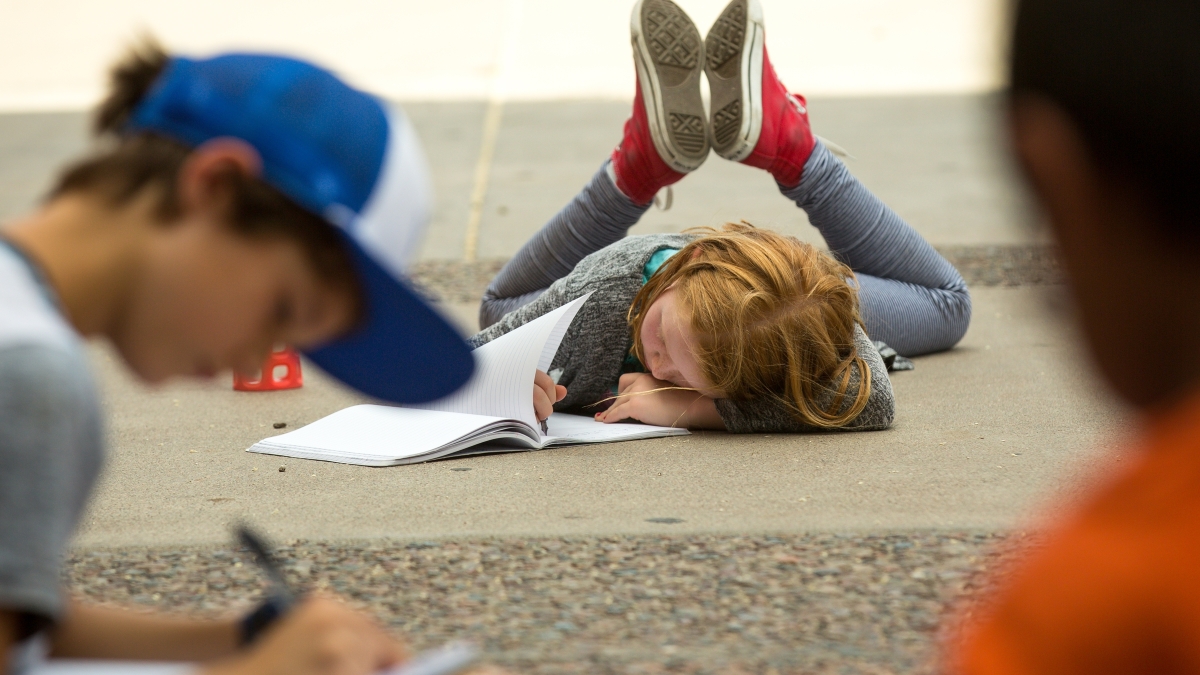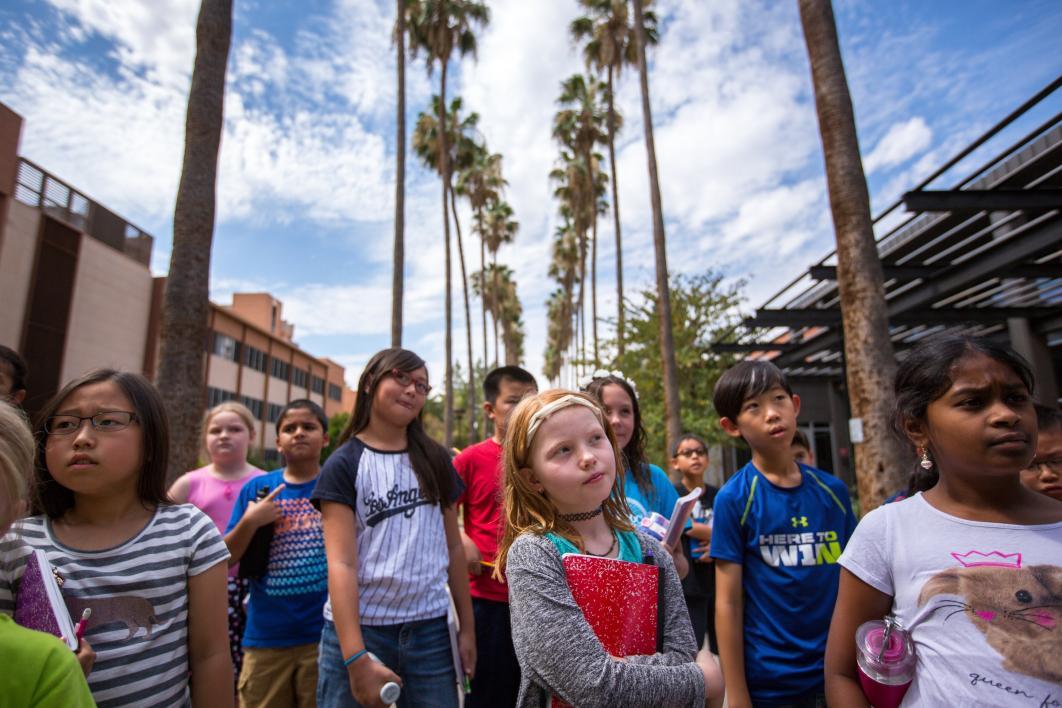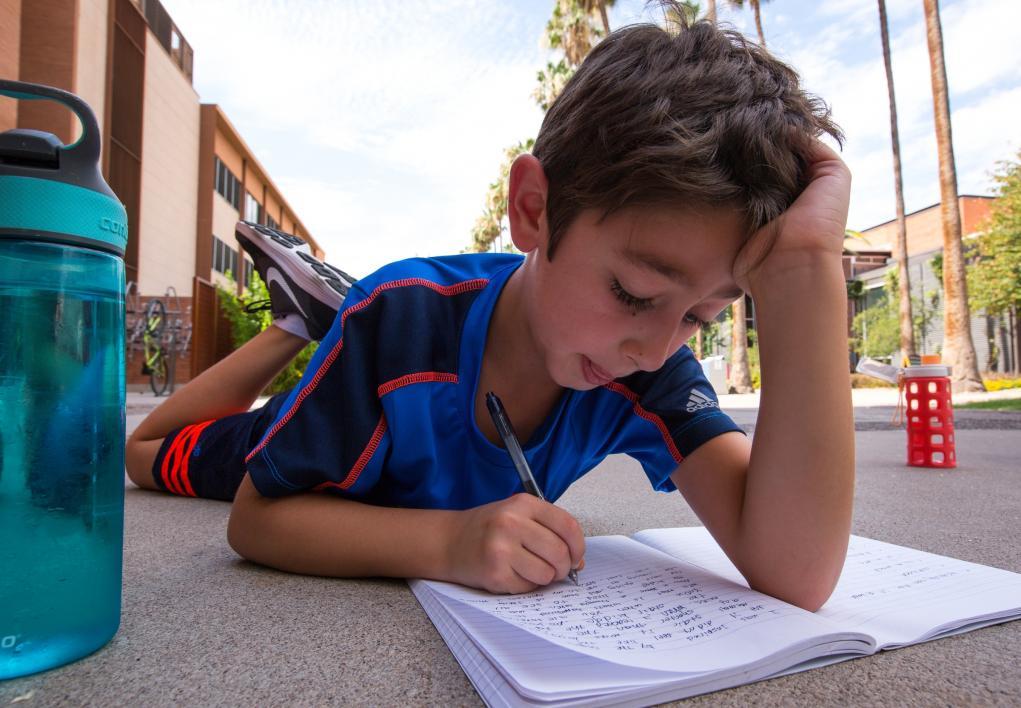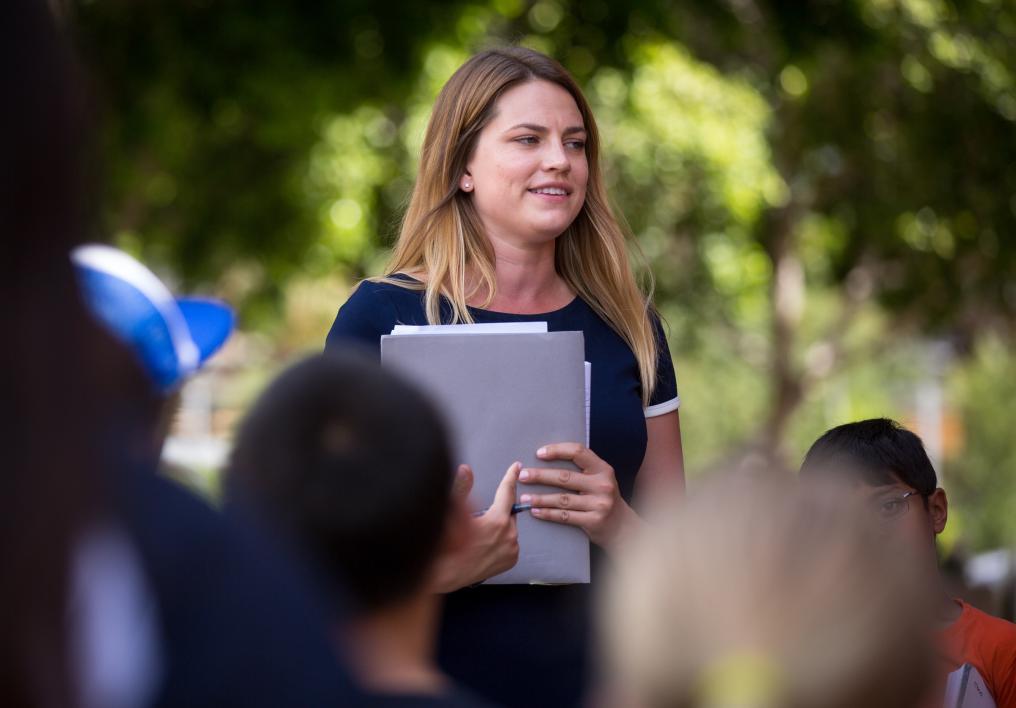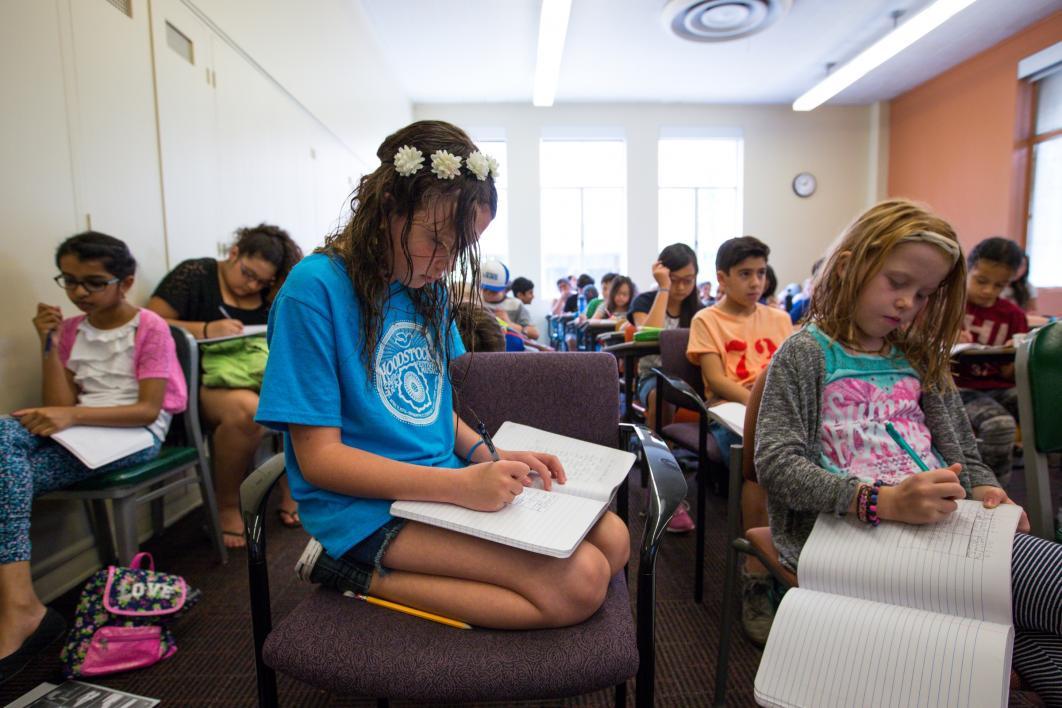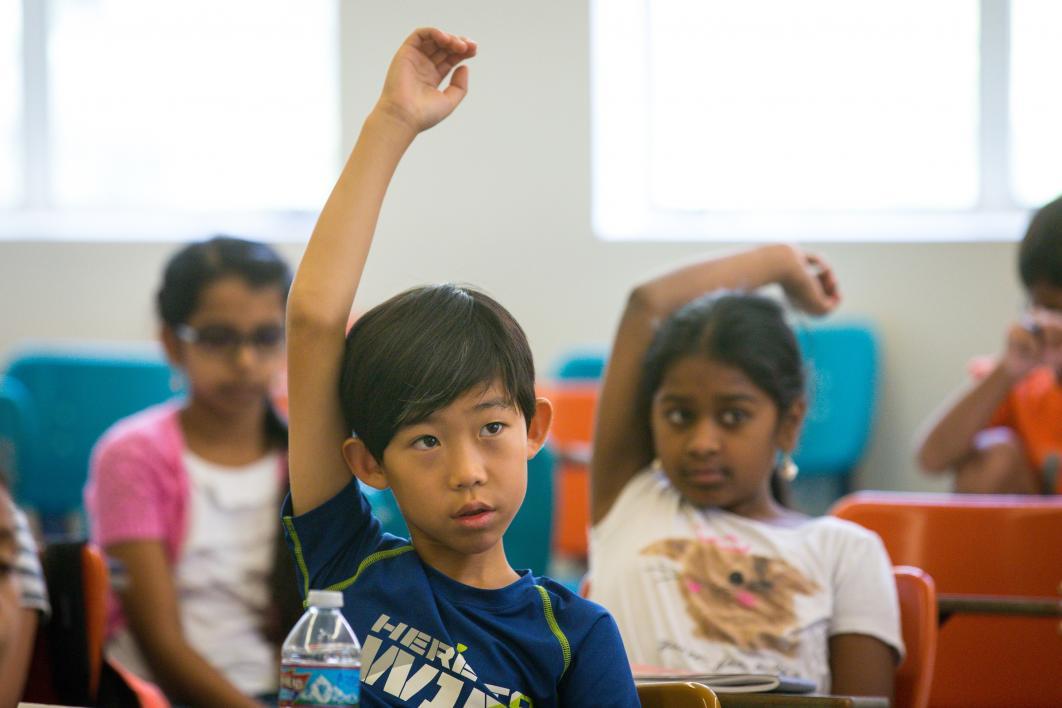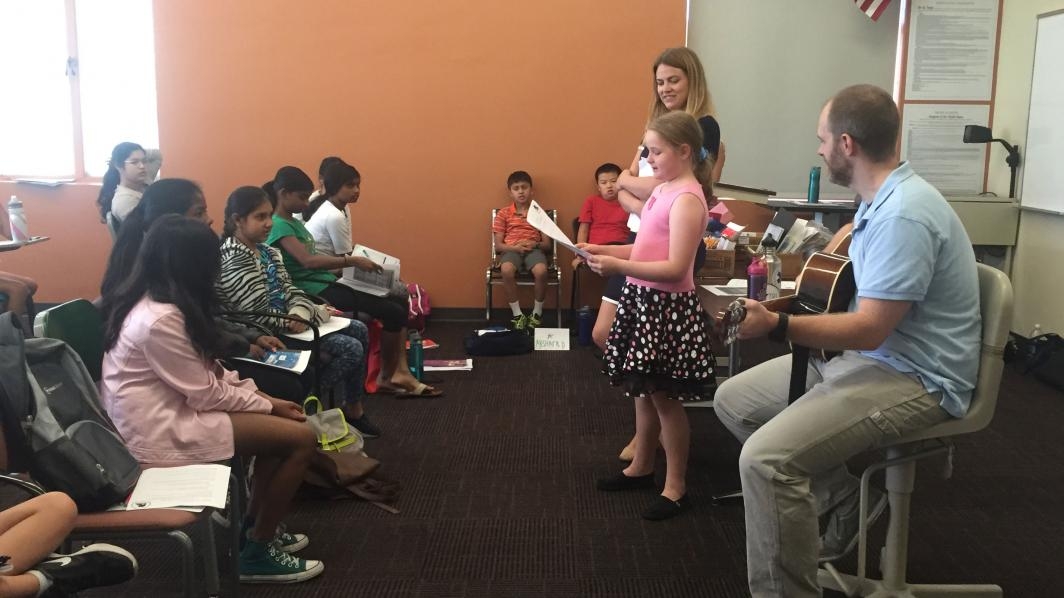Curly Hopkins, Texas Pickles Franklin and Fat Bad Boy King sit contemplating their next verse in a classroom on Arizona State University’s Tempe campus.
In reality, these students have fairly normal names. But this day they were blues lyricists as part of an exercise for the Young Adult Writing Program (YAWP), a two-week summer youth writing camp sponsored by the Central Arizona Writing Project within the Department of English at ASU.
YAWP offers young writers a non-evaluative environment in which to explore the power of writing. It’s one of the things program instructor Jason Griffith loves about it.
“One of the big benefits of this program is that kids are able to write without the pressure of being graded,” said the English education doctoral student.
According to program director and English professor Jessica Early, YAWP has grown “dramatically” over the past couple of years — so much so that it is now being offered at three ASU campuses: Tempe, Polytechnic and West.
“How do you create a beat with lyrics?” Griffith asks the students during Monday’s session at the Tempe campus.
A student toward the back gets it right: using the accents on syllables.
Songwriting is just one of the avenues students have learned to use as a means of storytelling. They’ve also participated in workshops that explored poetry, comic strips, memoirs, graphic novels and even tweets.
YAWP instructor Michelle Spears, who teaches English at Saguaro High School in Scottsdale, focused one of her lessons on something called a “six-word story.” The exercise challenged students’ ability to be concise and demonstrate the best possible word choice.
After writing their stories on the whiteboard, the students examined each other’s work, underlining what they thought was the most important word. Paradise Valley High tenth-grader James Khalsa values the opportunity to hear her peers’ opinions.
“It’s helpful to get critiques from other writers,” she said.
They’re also getting valuable industry information about things like the hairy process of publishing, which Griffith explains can vary greatly depending on whether the writing in question is fiction, non-fiction or something the author is looking to self-publish.
“The instructors are amazing,” said Early, pointing out that they each had been trained through the Central Arizona Writing Project before taking on leadership roles in YAWP.
Hersh Nanda agrees. The Basis Chandler seventh-grader said he feels they’ve definitely helped improve his writing by challenging him to look for inspiration in non-physical places like his imagination and memories. His blues song lamented the fact that he didn’t have any money to spend at the market.
Mesa Academy student Emily Stockwell’s bemoaned the difficulty of getting out of bed in the morning, something just about every other student could relate to as evidenced by the laughter and nods of agreement.
“This is really just a chance for us all to have fun writing together,” said YAWP instructor Autumn Warntjes, who teaches at Landmark Elementary School in Phoenix.
As if to prove her point, the class once again responds to a student’s verses with laughter and applause.
Top photo: Juniper Shutters, 8, writes down the thoughts about being on the University Drive bridge at the Young Adult Writing Program on Monday, June 27. Photo by Charlie Leight/ASU Now
More Arts, humanities and education
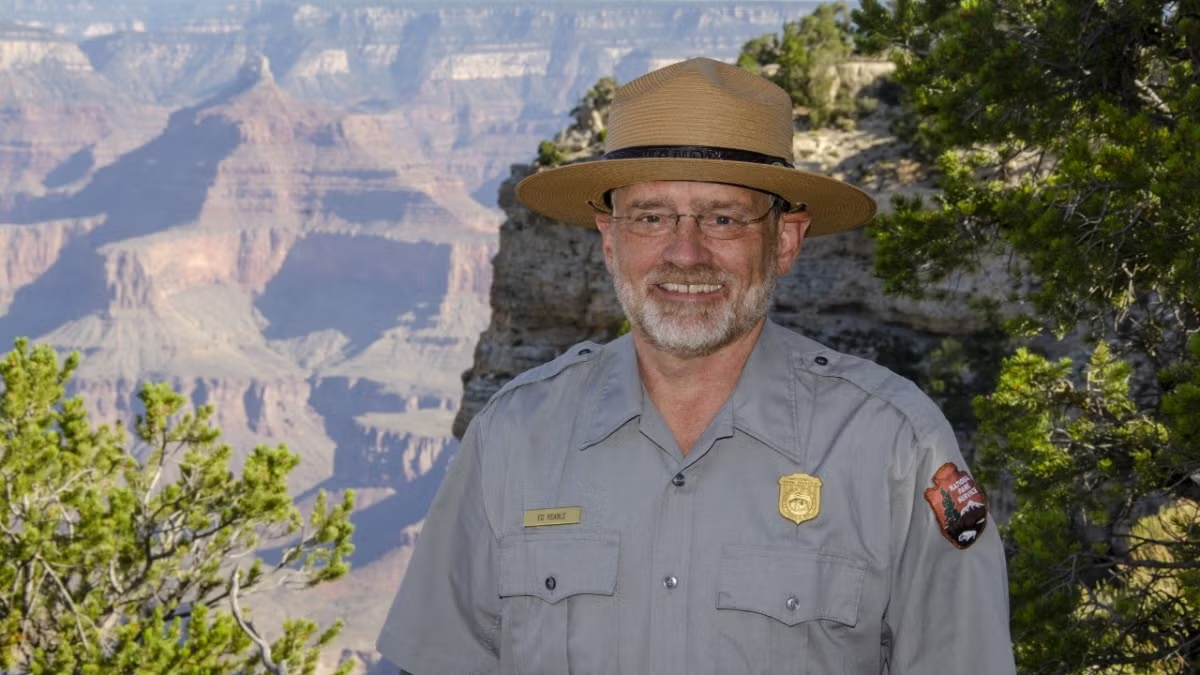
Grand Canyon National Park superintendent visits ASU, shares about efforts to welcome Indigenous voices back into the park
There are 11 tribes who have historic connections to the land and resources in the Grand Canyon National Park. Sadly, when the park was created, many were forced from those lands, sometimes at…
ASU film professor part of 'Cyberpunk' exhibit at Academy Museum in LA
Arizona State University filmmaker Alex Rivera sees cyberpunk as a perfect vehicle to represent the Latino experience.Cyberpunk is a subgenre of science fiction that explores the intersection of…

Honoring innovative practices, impact in the field of American Indian studies
American Indian Studies at Arizona State University will host a panel event to celebrate the release of “From the Skin,” a collection over three years in the making centering stories, theories and…
